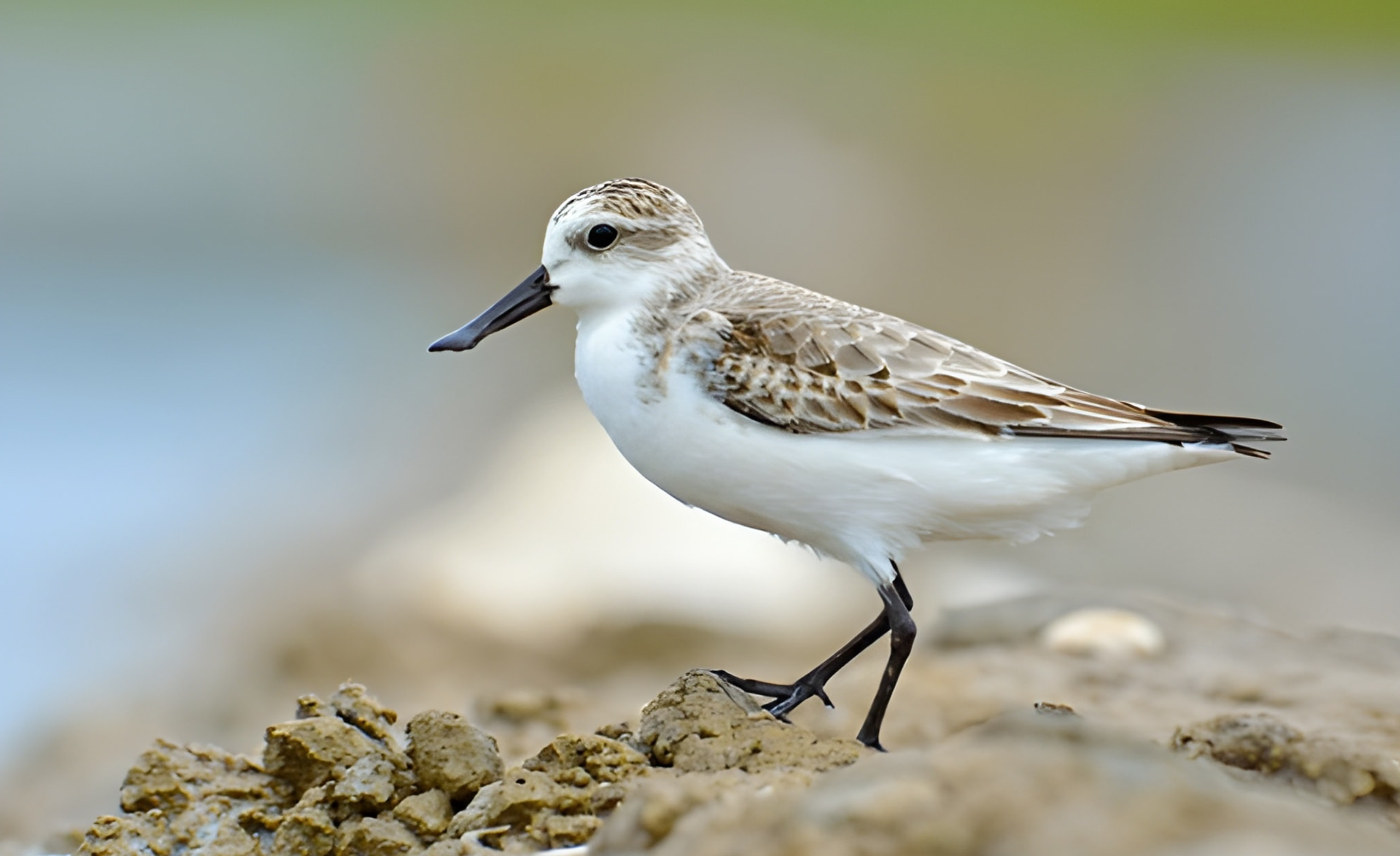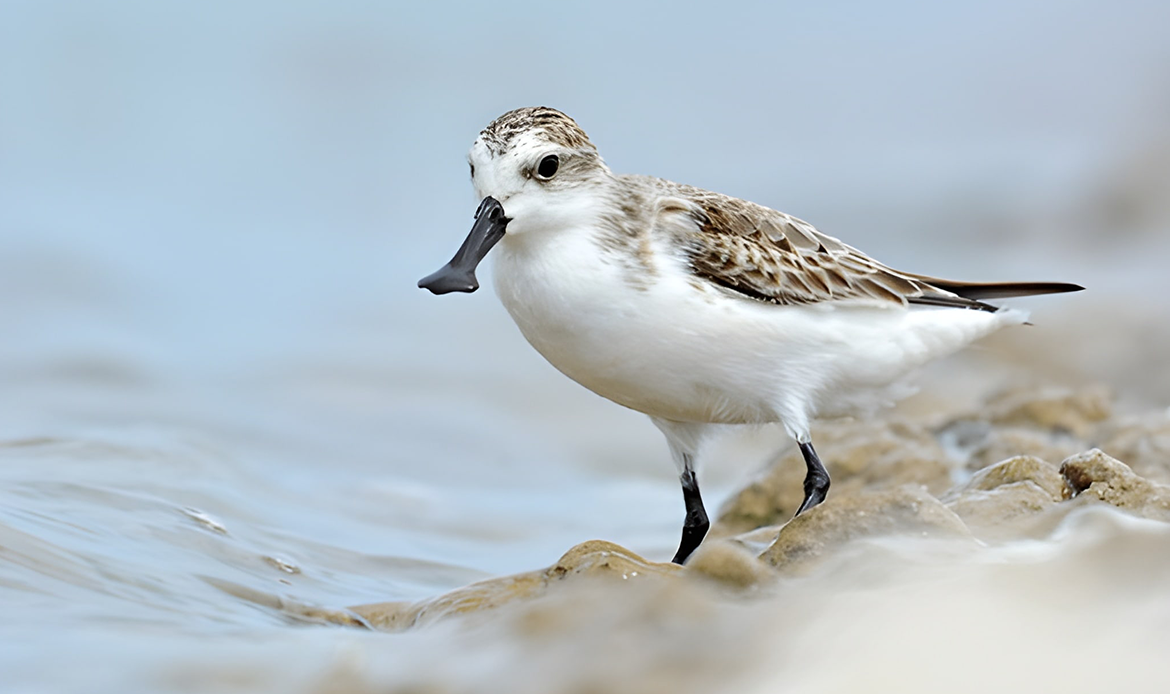
7 Inspiring Wildlife Conservation Efforts That Are Saving the Spoon-billed Sandpiper
Wildlife conservation is critical for upholding the equilibrium of nature and sustaining species that are endangered worldwide. One of the most endangered birds today is the Spoon-billed Sandpiper, a small migratory bird that is in real danger of extinction. The protection of this bird is an essential component of a larger endeavour to save endangered animals and preserve vulnerable ecosystems. By examining the conditions that the Spoon-billed Sandpiper is facing and the current efforts of protection, we come to an even greater appreciation of the significance of wildlife protection and the opportunities we have to support initiatives that help save wildlife globally.
Table of Contents
Meet the Spoon-billed Sandpiper
Spoon-billed Sandpiper is a small-sized shorebird that has its name because it has a unique bill that is in shape akin to the shape of a spoon handle. Their body measures about 13 to 16 centimetres long and they breed in the northeast part of Russia and migrate to East and Southeast Asia during the winter months. Due to their unique appearance and feeding habits, Spoon-billed Sandpipers are an important part of wetland ecology.
Spoon-billed Sandpipers primarily forage on small invertebrates in mudflats. Spoon-billed Sandpiper feeding habits contribute to wildlife conservation by regulating populations of certain insects and other invertebrates, while also allowing more nutrient cycling and energy transfer in intertidal ecosystems. By protecting Spoon-billed Sandpipers, all of these delicate ecological processes would continue, which would benefit many other wildlife species that share the same habitat.
The Life Cycle of the Spoon-billed Sandpiper
The life cycle of the Spoon-billed Sandpiper shows why the birds are so susceptible to endangerment. During summer, these birds breed in the tundra, with the female laying 3-4 eggs per clutch, and both parents caring for the chicks, which fledge after a few weeks. Once parenting is complete, the Spoon-billed Sandpiper migrates thousands of kilometres to coastal areas in places like Asia, such as the Yellow Sea.
During migration, the Spoon-billed Sandpiper relies on the intertidal mudflats to feed. Unfortunately, habitat destruction along these sites means that food supply is now drastically reduced, jeopardizing its survival. This means conservation efforts must focus on migratory pathways and, in addition to breeding grounds to save endangered animals like the Spoon-billed Sandpiper.
Why the Spoon-billed Sandpiper Is Endangered?
The Spoon-billed Sandpiper is critically endangered, with only an estimated 200–300 birds still alive in the wild. The birds face threats from the following:
- Hunting/Egg Collection: Illegal in many areas, the risks of hunting and eggs collection continue.
- Habitat Loss: Construction and land reclamation have rapidly decreased the crucial existence of coastal mudflat feeding areas.
- Pollution: Environmental contaminants in water bodies decrease food availability and harm the birds’ well-being.
- Climate Change: Rising sea levels and unpredictable weather patterns are changing breeding rates and extent in breeding and wintering areas.
Addressing these threats is crucial for wildlife conservation and helps ensure that we can continue to protect wildlife for future generations.
7 Inspiring Wildlife Conservation Efforts
Globally, there are plenty of efforts being made to help save wildlife and specifically to conserve the survival of the Spoon-billed Sandpiper, which is listed as endangered. Here are seven key examples of action that are making a difference:
- Protected Areas Through Nature Reserves
Countries along the Spoon-billed Sandpiper’s migratory route of which have protected areas and nature reserves, including Russia, China, and Bangladesh, all protecting important breeding and feeding grounds, to ensure the population does not decline further, while contributing to global wildlife conservation efforts.
- Global Partnerships / NGO’s
Multinational organizations, like the Spoon-billed Sandpiper Task Force, assess international conservation activities. Non-governmental organizations partner with local state and community members to monitor populations, protect against illegal actions, and facilitate habitat recovery. These examples illustrate how partnerships can work towards saving endangered animals.
- Education and Community Involvement
Local communities are fundamental in helping to protect the Spoon-billed Sandpiper. Educational campaigns may help inform residents of the need to advocate for a large variety of wildlife, including the Spoon-billed Sandpiper, and possible ways to mitigate their impact to protect wildlife, including hunting, trapping and disturbing nesting sites.
- Captive Breeding Programs
In the interest of saving the Spoon-billed Sandpiper from extinction, a captive breeding program initiated on several breeding grounds has been developed to raise chicks in a controlled environment and release them in their geographic region. Breeding programs are a significant part of a multi-part strategy to allow for the persistence of wildlife in the face of all threats to their natural environment.
- Monitoring and Research
Using a combination of satellite tracking and field data, scientists are able to study migratory routes, feeding behaviour and estimate population trends. These data are important for designing conservation measures, and they assist in developing best practices to help save wildlife.
- Wetland Restoration Projects
Restoration of degraded mudflats and intertidal zones is important to save endangered animals, such as Spoon-billed Sandpipers. Restoration improves the abundance and quality of food resources and provides safe environments for roosting, nesting, and feeding, all of which contribute to wildlife conservation efforts.
- Policy and International Treaties
International conventions, such as the Convention on Migratory Species (CMS), provide incentives for countries to conserve migratory birds and their habitats. Sound policy enforcement protects wildlife in the long term and strengthens global conservation.
Success Stories in Wildlife Conservation
The Spoon-billed Sandpiper is not the sole species benefiting from this type of program. Other migratory birds and endangered species have increased in number as a result of similar conservation efforts. These accomplishments indicate that cooperative actions can really make a difference in the conservation of wildlife, and they provide hope for critically endangered birds like the Spoon-billed Sandpiper.
The Role of Individuals in Protecting Wildlife

While organizations and governments are undertaking efforts on a more structural scale, we also need individual actions. Everyone can help save wildlife by supporting local and international programs, participating in voluntary projects, and simply acting and making other people aware of wildlife issues. The contributions we as individual people can make, like reducing pollution, not disturbing natural habitats, reporting illegal actions, etc. can go a long way when added together.
How Technology Supports Wildlife Conservation
Conservation of wildlife has been transformed by contemporary technology. With GPS tracking, drones and artificial intelligence-enabled monitoring, scientists are able to determine the Spoon-billed Sandpiper’s migration and report threats in real time. Technology also provides new ways for partners around the world to share data and engage in specified coordinated outreach efforts to counter threats and save endangered animals quickly and effectively.
Challenges and the Future of Spoon-billed Sandpiper Conservation
Although the efforts are thus commendable, there are still challenges to face. Funding shortfalls, climate change, and continued habitat destruction all threaten long-term success. Continued vigilance, better policies, and public involvement are essential to protect wildlife and to guarantee that Spoon-billed Sandpipers can be viewed by future generations in their natural habitat.
Last Words of Encouragement
Although the Spoon-billed Sandpiper is a small bird, it serves as an important representative of the need for conservation of wildlife. Everything we do to help—whether it is donating to a conservation NGO, becoming a volunteer, or simply helping spread awareness—helps save endangered animals from extinction and enhances global efforts to protect wildlife. By taking part in conservation, we are helping to protect a future in which birds like the Spoon-billed Sandpiper can still thrive. Remember to help save wildlife today, and to get others involved. Together we can make this world a better, safer and wilder place.
FAQ Section
1. Why is wildlife conservation important for the Spoon-billed Sandpiper?
Conservation of wildlife is important for the survival of endangered species and the preservation of ecosystems. Protecting habitats and feeding grounds is important for migratory birds like the Spoon-billed Sandpiper.
2. Why is the Spoon-billed Sandpiper classified as an endangered species?
The main threats that contribute to critically low numbers include habitat loss, illegal hunting, pollution and climate change.
3. How does conservation help protect endangered species?
Conservation programs protect a host of species recently threatened with extinction through habitat protection, breeding programs, research, and community involvement.
4. What challenges is the Spoon-billed Sandpiper facing today?
The main threats to survival are the loss of breeding and feeding habitat, illegal hunting, pollution and rising sea levels.
5. How can individuals help protect wildlife and help save animals like the Spoon-billed Sandpiper?
Individuals can volunteer, donate to conservation efforts, reduce pollution, not disturb the habitat they are in, and teach others about protecting endangered species.
